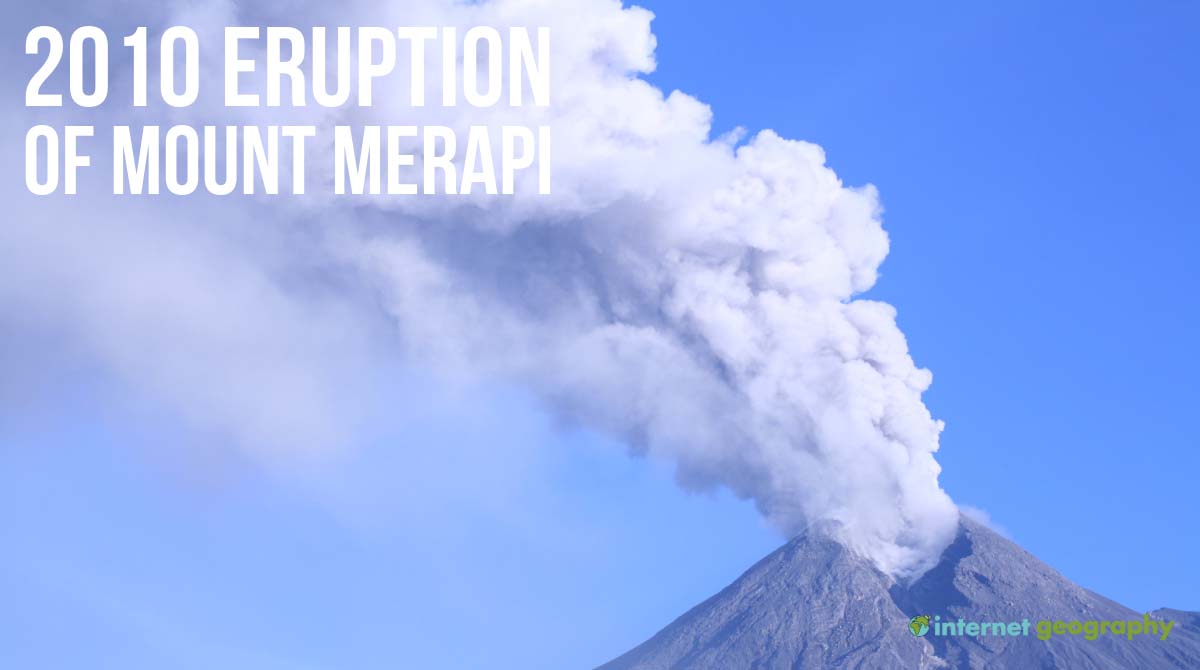When and Where Did It Occur?
Mount Merapi’s eruption occurred between October 25 and November 30, 2010. Mount Merapi is a stratovolcano on Java, Indonesia, known for its frequent and explosive volcanic activity.
Why Did It Occur?
The eruption occurred at a destructive plate boundary, where the Indo-Australian plate is subducted beneath the Eurasian plate. This subduction is a common trigger for volcanic eruptions in the region, causing magma to rise and erupt when pressure within the Earth’s crust builds sufficiently.
Short-term Impacts
The immediate consequences of the eruption were severe:
- The event claimed 353 lives and caused 577 injuries.
- A pyroclastic flow extended up to 3 km from the volcano, devastating everything in its path.
- Volcanic ash spread across a wide area, falling up to 480 km away from the volcano and significantly disrupting daily life and health.
- About 350,000 people were evacuated from the surrounding areas, with temporary displacement affecting massive populations.
- Critical infrastructure, such as roads, were blocked, and schools and airports were closed, disrupting local economies and education.
- The eruption caused lahars (volcanic mudflows), further endangering nearby communities and landscapes.
Long-term Impacts The longer-lasting effects led to several changes in both policy and local lifestyles:
- The hazard map and exclusion zone around Merapi were permanently revised, expanding to a 20 km radius to enhance safety.
- Over 2,500 residents were relocated to new permanent homes as part of disaster recovery efforts.
- Farmers were provided Financial assistance to replace livestock and crops lost to the eruption.
- Significant improvements were made in volcanic monitoring and emergency preparedness, including increased education on evacuation procedures.
- Infrastructure such as dams was built to control lahars in future events.
- Although initially disruptive, the volcanic ash eventually contributed to increased soil fertility, benefiting agricultural practices in the longer term.
Effect of Economic Development on the Impacts The economic development status of Indonesia, an emerging market with varying levels of regional development, significantly influenced the eruption’s impacts. The lack of robust infrastructure and limited resources in rural areas exacerbated the disaster’s severity and complicated the emergency response. Economic challenges were evident in the initial decrease in tourism income and the rise in food prices due to crop damage. However, governmental and international aid helped recover and rebuild efforts, highlighting the role of effective governance and external support in managing natural disaster impacts in less economically developed regions.

